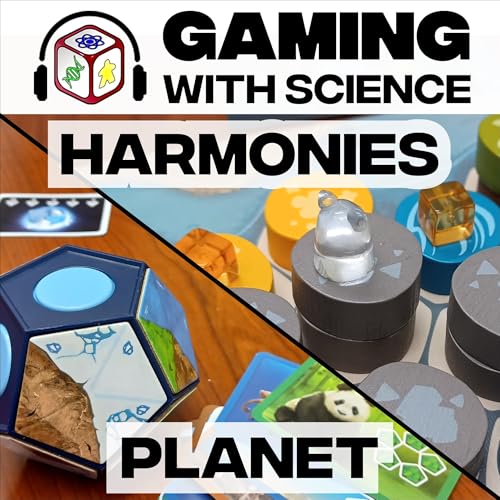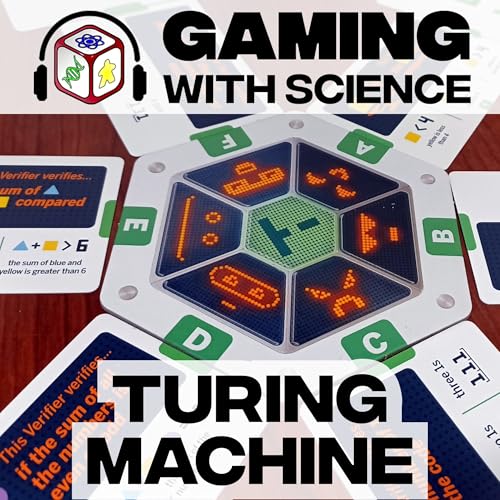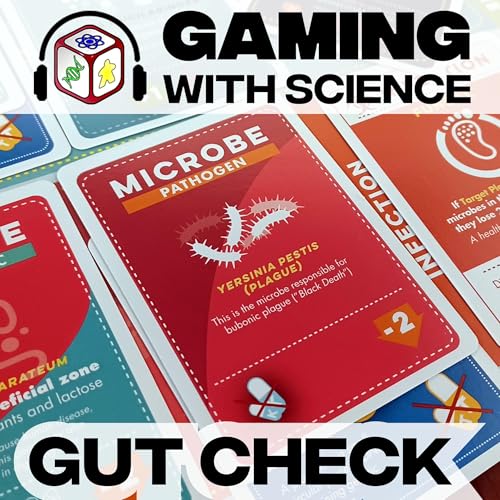#genetics #genotype #GeniusGames #mendel #peas #BoardGames #Science This month we're talking about Genotype, by Genius Games, where you get to play a field assistant to the father of modern genetic, Gregor Mendel. We'll talk about who Mendel was, why his peas were so important to biology, how he got a bit lucky, and how many different ways there are to break a gene. (Also, why it's weird that some humans can drink milk as adults, and why cats and borrowed board games don't mix.) Timestamps 00:00 Introductions01:30 New paper on Mendel's Peas04:46 Overview of Genotype Game08:16 The Meatball Incident13:45 Who was Gregor Mendel?16:08 The seven pea genes20:36 How to break a gene27:47 The Modern Synthesis of biology31:04 Dominant and recessive genes38:22 Mendelian genes in humans44:59 Nitpick corner48:40 Final grades Links Genotype (Genius Games)Massive study of Mendel's pea genes (Nature)Hankweed: Mendel's unfortunate second choice for plants to study (PubMed Central)Evolution of human lactase persistence (=drinking milk as adults) (Nature Genetics) Find our socials at https://www.gamingwithscience.net This episode of Gaming with Science™ was produced with the help of the University of Georgia and is distributed under a Creative Commons Attribution-Noncommercial (CC BY-NC 4.0) license. Full Transcript (Some platforms truncate the transcript due to length restrictions. If so, you can always find the full transcript on https://www.gamingwithscience.net/ ) Jason 0:01 Brian. Brian 0:06 Hello and welcome to the gaming with science podcast where we talk about the science behind some of your favorite games. Jason 0:13 Today, we will be talking about Genotype by genius games. Brian 0:19 Hey, I'm Brian, and I am joined by a very special guest today, an expert in plant genetics. Jason Wallace, yay! Jason 0:26 Hey everyone. So I know you already know who I am, but this is, like, today's topic is what I do for my bread and butter. This is my research area. So we figured we'd run with this. It's been a while since it's been just us for a full episode. So Brian 0:38 yeah, it has. This is gonna be, this is gonna be harder work than we normally have to do, but, you know, but you are the expert today, so you are going to talk about it, and I'm going to be here to ping you with questions, Speaker 1 0:47 yeah, which means I probably should give a little bit of background, because I'm not sure I've ever done that. So we're both researchers at the University of Georgia, both associate professors. My background is in genetics and molecular biology and informatics, which basically means studying very small things and how they get passed down from organism to organism in bacteria and now plants. And my specific area, which we may talk about later, is quantitative genetics, which is complex traits, but not actually the very simple traits, like we're going to talk about with Mendel's peas for today in the game genotype, but traits that are controlled by many, many, many genes and that have more complex interactions. Brian 1:28 Cool, cool, cool, cool. Jason 1:30 Let's go ahead and start off with a fun science fact. And Brian, I'm going to throw this to you, because I'm going to be talking a lot this episode Brian 1:35 Yeah. I mean, totally, totally fine. There was a paper published recently in Nature, where they described and identified the genes responsible for the last three of Mendel's seven traits. So could not be more appropriate for this game. Four of the genes were known, so Mendel studied seven different traits. Jason 1:54 We'll talk about that later, and we'll probably talk about this paper a lot later. Yeah, Brian 1:59 we probably will. Honestly, I'm hoping you can explain it to me, because I study bacterial genetics, and it's way easier than plant genetics, but basically, the four of the genes had been described previously, three of them had not. And this study was a massive genome sequencing effort across a huge diversity of domesticated and wild pea species, and they were able to do something called a genome wide association study. So they looked to see which plants had a particular phenotype, they looked at their genotype, and we're kind of able to say it's like, well, if we look at this sort of mathematically, we can see that everything that has this feature seems to be pointed down to this region of the genome. And we're able to identify these last three genes and and really it's interesting, right? Because we knew about genetics way earlier than we understand how heredity actually worked, how DNA worked, how any of that stuff worked, because it follows simple mathematic principles. And actually, what's interesting is a lot of times it's about how genes get broken. And this study in particular was sort of understanding the for the most part, the way that these traits were associated with breaking these seven genes in very specific and very different ...
続きを読む
一部表示
 2025/09/241 時間 15 分
2025/09/241 時間 15 分 2025/08/2754 分
2025/08/2754 分 2025/07/3055 分
2025/07/3055 分 28 分
28 分 58 分
58 分 2025/04/3059 分
2025/04/3059 分 2025/03/2656 分
2025/03/2656 分 2025/02/2654 分
2025/02/2654 分
